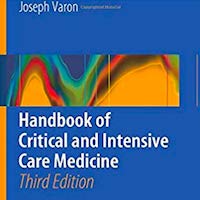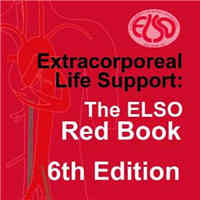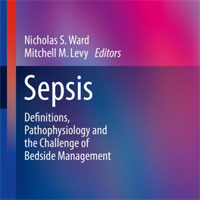Tag: diagnosis
Hemodynamic Monitoring Using Echocardiography in the Critically Ill
The hemodynamic evaluation of patients with acute circulatory failure and respiratory failure has in the past usually been performed using invasive procedures but in recent years less invasive monitoring devices have been... read more

Red Book: Report of the Committee on Infectious Diseases
Extending an 8-decade tradition of excellence, Red Book® provides the most reliable and clinically useful information on the manifestations, etiology, epidemiology, diagnosis and treatment of more than 200 childhood infectious... read more
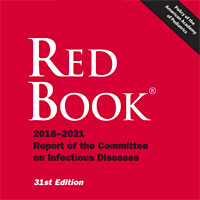
Serum MANF vs. Severity and Prognosis in Community-acquired Pneumonia Patients
This evidence demonstrated that serum mesencephalic astrocyte-derived neurotrophic factor (MANF) is positively associated with scoring criteria and poor prognosis in community-acquired pneumonia (CAP) patients. Serum... read more
Holy Water Not so Holy: Potential Source of Elizabethkingia Pneumonia and Bacteremia in an Immunocompromised Host
This case report highlights that E. anophelis may indeed cause significant infection and should not be considered a contaminant especially in immunosuppressed individuals. The organism originates from water sources and may... read more
Clinical Characteristics and Survival Outcomes of Invasive Pulmonary Aspergillosis Patients
Invasive pulmonary aspergillosis (IPA) is a severe infectious disease caused by Aspergillus spp. It is associated with high mortality, particularly in immunocompromised patients, as well as in those with COVID-19 pneumonia... read more
Increased Sodium Levels Associated with Ceftriaxone Administration
Serum sodium elevation is considered a frequent manifestation in critically ill patients, with significant clinical outcomes and requiring timely management. This case report suggests a possible association between the... read more
Dynamic Left Ventricular Outflow Tract Obstruction Induced by IABP in Patient with Angioedema
Mechanical circulatory support with intra-aortic balloon pump (IABP) can aid in the treatment of cardiogenic shock but may rapidly become detrimental due to the reduction in systolic arterial afterload in patients with predispositions... read more
Management of ARDS COVID-19 Patients Using Hemoperfusion and CRRT
Combined hemoperfusion (HP) and continuous renal replacement therapy (CRRT) hold promise as a potential intervention for severe COVID-19 cases with multiple organ dysfunction, leading to improved clinical outcomes. Fifty-six... read more
VAP Recurrences Definition: European Experts Consensus
This consensus by European experts proposes four different ventilator-associated pneumonia (VAP) recurrence entities which should facilitate the harmonization of recurrence criteria for clinical practice and future studies. Thirty-six... read more
Sepsis: Staging and Potential Future Therapies
Sepsis is a life-threatening organ dysfunction caused by a dysregulated host response to infection. Variability in pathogenesis and complex pathophysiology often delay diagnosis and create significant challenges for clinical... read more
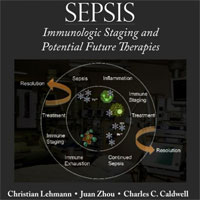
Pulmonary Hypertension: Controversial and Emerging Topics
This book is a clinical guide to controversial and emerging topics in pulmonary hypertension. There are multiple challenges and unanswered questions encountered by clinicians that evaluate, diagnose and treat patients with... read more
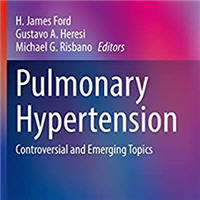
Predicting Renal Outcomes in Cardiac Surgery Using Intraoperative Renal Near-Infrared Spectroscopy Monitoring
This study shows that intraoperative monitoring of near-infrared spectroscopy (NIRS) values and monitoring of critical thresholds may be an important tool in predicting the development of acute renal failure (ARF) and other... read more
Using AI to Detect and Treat Delirium
The prevention of delirium in ICU represents a major unmet need because of its high prevalence, under-diagnosis, and independent association with adverse outcomes including higher mortality and accelerated cognitive decline.... read more
Unsupervised Multi-modal ML Approach for Robust CPR Signal Denoising
The significance of denoising biomedical signals, particularly in crucial life-saving interventions like cardiopulmonary resuscitation (CPR), cannot be overstated, as the accuracy and reliability of CPR data can be a matter... read more
Severe COVID-19 Early Identification and the Need for ICU Care Based on Objective Risk Factors
The study found that several factors, including advanced age; male gender; and comorbid conditions like diabetes, chronic lung disease, and CVD had a strong association with ICU admission among COVID-19 patients. Similarly,... read more
Hemophagocytic Lymphohistiocytosis Markers Associated with Mortality in Critically Ill Patients
The present study highlights the prognostic significance of HLH criteria in critically ill patients. Individuals exhibiting two or more criteria at ICU admission experienced nearly a doubling in mortality as compared to patients... read more
COVID-19 Omicron: Immunocompromised vs. Non-immunocompromised Patients
Immunocompromised patients admitted to the ICU due to COVID-19 during the omicron period had higher mortality than non-immunocompromised patients. Additionally, immunocompromised patients with COVID-19 had higher mortality... read more
Eosinopenia as a Predictor of Clinical Outcomes in CAP Patients
Contrary to previously published data, our analysis did not demonstrate an association between eosinopenia and increased mortality risk in hospitalized patients with community-acquired pneumonia (CAP), highlighting the complexity... read more
Recent Advances in Severe Sepsis and Septic Shock Management
This review highlights recent advances in the treatment of severe sepsis and septic shock, emphasizing new strategies aimed at improving overall survival and reducing mortality in this patient population. Despite years... read more
Textbook of Neurointensive Care: Volume 1: Neuroanatomy, Diagnostic Assessment, Disease Management
This extensively updated edition provides a comprehensive review of intensive care for neurologically injured patients from the emergency room and ICU through the operating room and post-surgical period in two comprehensive... read more
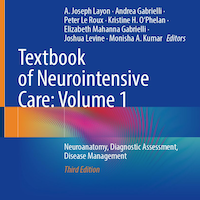
Handbook of Lung Targeted Drug Delivery Systems: Recent Trends and Clinical Evidences
Handbook of Lung Targeted Drug Delivery Systems: Recent Trends and Clinical Evidences covers every aspect of the drug delivery to lungs, the physiology and pharmacology of the lung, modelling for lung delivery, drug devices... read more

Mental Health in the First Year After ICU-treated Sepsis
Existing data on the prevalence of mental health impairments (MHI) following sepsis and intensive care are based predominantly on self-reported symptoms assessed by using questionnaires, small sample sizes, and clinically... read more




